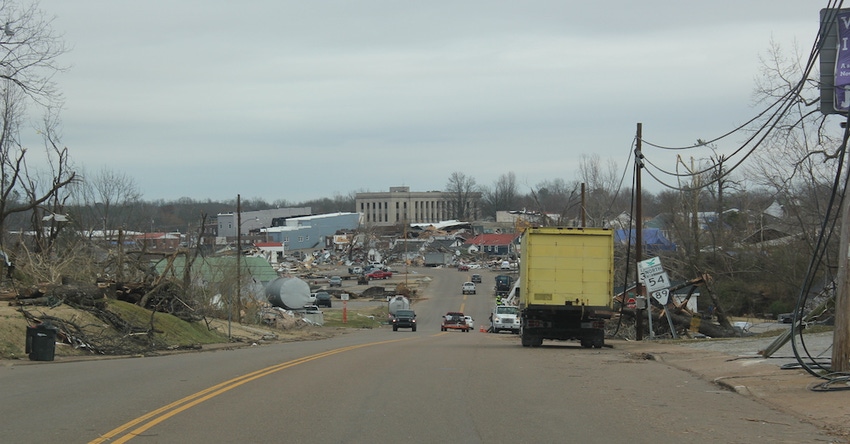
Like many of you, I awoke on a Saturday morning a few weeks ago to news reports of devastating losses caused by a series of deadly tornadoes. The images were shocking and heartbreaking.
Later in the day, I received photos from friends who lived in the path of the storm. All were ok, fortunately, but they did not escape loss. Childhood home destroyed, farm shop flattened, businesses damaged — those were a few of the stories from the storm from people I knew personally — just a tip of the iceberg.
My friend Jay Yeargin farms in northwestern Tennessee, just minutes from the town of Dresden. The storm skirted Jay’s farm, but the town took a direct hit.
I had been planning to do a story with Jay for some time. He and wife Alice Ann were the Tennessee Farmers of the Year. But my visit to the Yeargin Farm in the days after the storm was very different from most farm visits. Jay, who in addition to farming is a parttime firefighter, had been on the scene early, helping clear roads for search and rescue crews. Like many others in this tight-knit community, he had continued helping with tornado cleanup. He took a break to talk with me and show me some of the damage.
As bad as the photos being shared on social media were, it was a thousand times worse in real life. You just can’t capture the scope of the damage in a single shot. A photo cannot capture the shock you experience when you round a corner on a familiar road and the landscape is forever changed.

There were serious injuries, but miraculously no fatalities in Dresden — which is amazing when you see the destruction. How was anyone able to crawl out of that rubble in pitch black darkness? Of course, in other areas, many were not so fortunate.
It’s been almost a month ago, but the victims of those December tornadoes are still hurting. You don’t just snap back from a loss like that. Some will argue that the rural communities hit by the storm will never be the same.
In the days following the tornadoes, these communities were inundated with volunteers and donations. But as time passes, help for disaster relief often diminishes says Phil Mitchell, director of missions for the Weakley County Baptist Association, which was coordinating relief efforts in Dresden. The Southern Baptist Disaster Relief is working in each of the states affected by the storms. Mitchell told me they did not need any more clothes or tarps, but volunteers, water and monetary donations will be needed for some time.
The images of destruction often fade for those of us not directly affected. Just a reminder that there are people who still need our help.
About the Author(s)
You May Also Like






